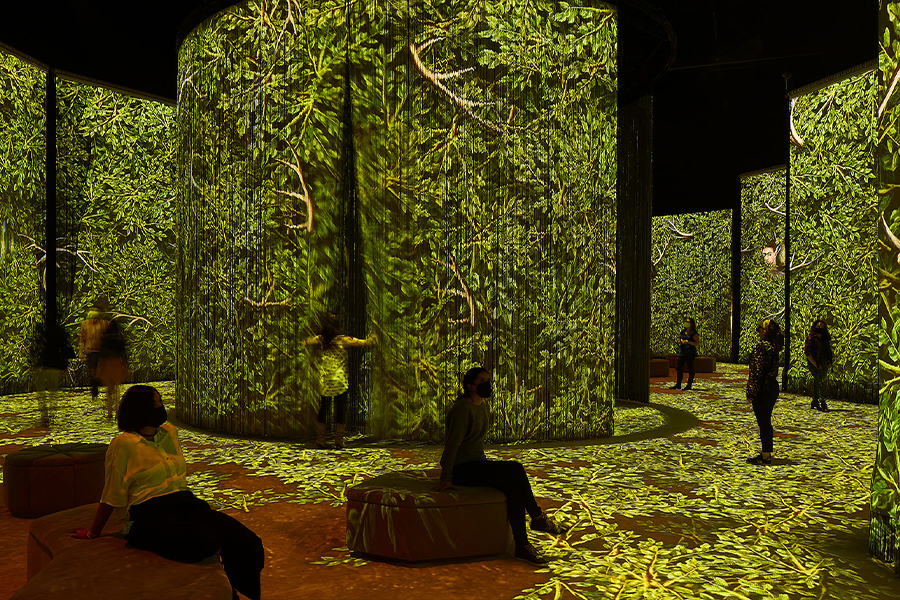Whether we’re dealing with myths, festivals, rituals, places, or objects, there’s great power in the narratives that are passed down through culture.
But how can we access these riches in our experiences – and inspire participants who may not have come from these cultures to reach connection, understanding and even transformation as a result?
To answer this question we invited the team at multimedia experience company Cocolab International to share their journey towards creating inspiring and meaningful cultural experiences, both in their home country of Mexico and around the globe.
Over the past 15 years, Cocolab has staged 71 multimedia experiences spanning immersive exhibitions, multimedia museography, immersive walks and art installations. These experiences explore culture and nature as a bridge to new worlds that inspire and motivate positive transformation.
Cocolab’s diverse team includes filmmakers, storytellers, interaction designers, civil engineers, anthropologists and more from all over the world, and they have worked on projects in Canada, Brazil, Italy, the UK, China, the US and beyond. The result is an approach that is used to working with familiar and unfamiliar cultures and combines a lot of different viewpoints, yet works towards a universal goal:
“We believe that our frenetic daily lives and routines have veiled the meaning that our natural and cultural surroundings have. We use experience design and experiential tech to unveil that meaning, so that people can connect with their culture, humanity, and the universe.”
Alejandro Machorro
In this Campfire Cocolab’s CEO Alejandro Machorro and Director of Strategy Miguel Melgarejo reveal how they dig into cultural traditions to create experiences that provoke positive transformation. Here are our top takeaways from their presentation – to watch the full recording or join the interactive discussion at future Campfires, apply to join the WXO today.
Hacking Cultural Elements To Create A Renewed Sense Of Awe
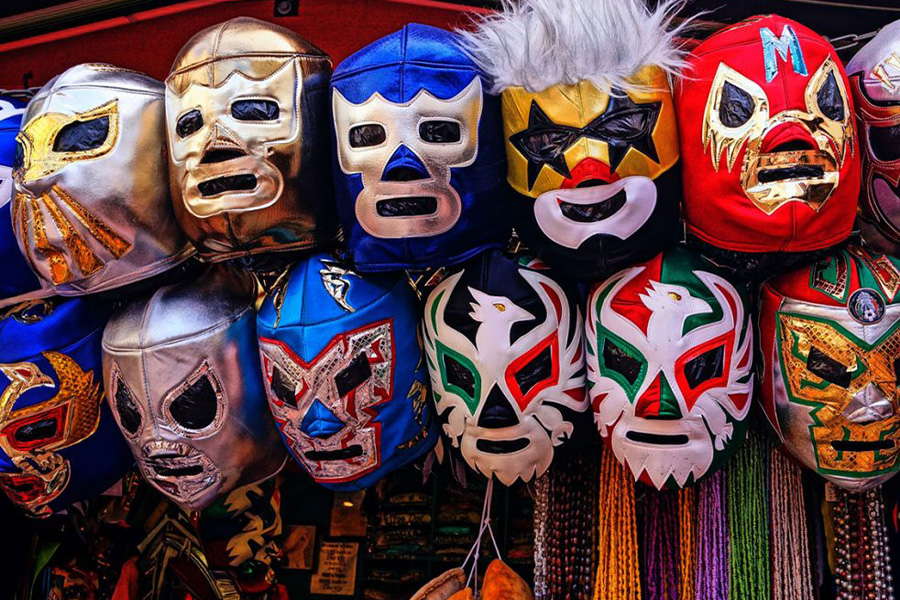
Most everyday entertainment is linked to cultural icons and conventions. Take the birthday party, or in this case, a Mexican birthday party. Those attending know the format and rituals to expect. They understand the basic narrative – like someone will try and push the birthday celebrant into their cake. They know what interactions to expect – like breaking the piñata, and the song to sing while doing it. All of this happens inside a particular environment, or world, with specific decorations and music. And there are peak moments and takeaways that linger with us after the experience ends.
In fact, these elements are shared by all experiences. They are all delivered through a world that contains a narrative, format, and interactions, to participants who take away peak moments and experience transformation.
The problem arises when we repeat the same experience and same cultural motifs over and over again: they lose their meaning, and we’re no longer excited by it. So as experience designers, we must ask ourselves: how can we hack these elements to create a renewed sense of awe and meaning?
Bringing New Meaning To Cultural Icons
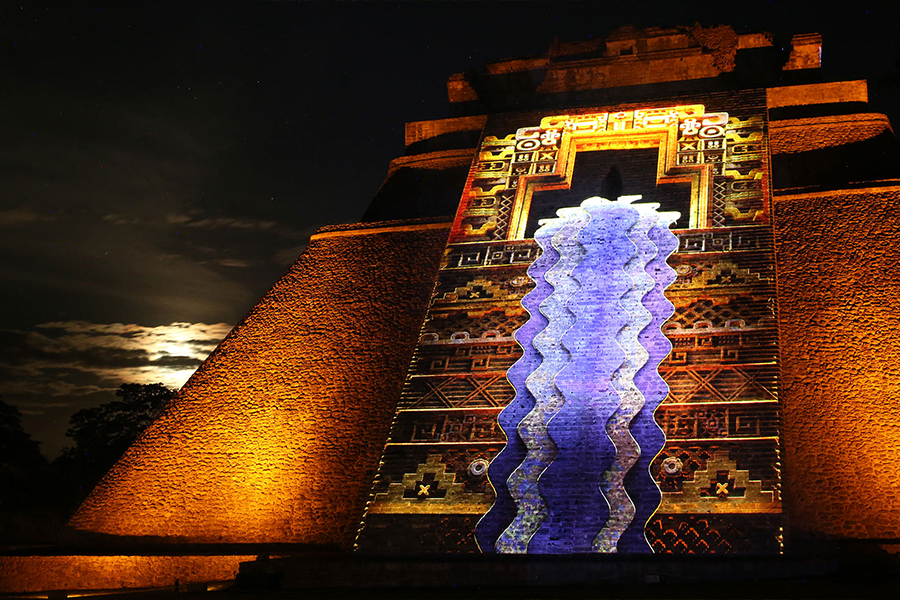
The first step is to explore what might happen when we take a well-known cultural element and bring new meaning to it. For Cocolab, several of their projects have focused on cultural images that bring value and meaning not only to Mexicans, but to the world at large, taking this meaning and reframing it for new audiences to discover.
For example:
- A feminist Mexican painter whose work immersed the world in her (sur)reality is given new life in a groundbreaking immersive exhibition of her paintings (Frida Kahlo).
- Another painter escaping the war in Europe finds refuge in Mexico has her work revived for a new age (Leonora Carrington).
- A traditional festival that turns the grief and pain of individual moments of death into collective celebration is reimagined for non-traditional audiences (Day of the Dead).
“The stories of these cultural images are repositories of deep truth and authenticity. We want to bring people to discover this meaning again.”
Miguel Melgarejo
In another project, Ecos de Uxmal, the Cocolab team breathed new life into the often uninspired experience of visiting a Mexican cultural site. Normally this consists of walking around in the hot sun, being bitten by mosquitoes, and only happens on a school trip or when you have foreign visitors.
Cocolab flipped this experience on its head, opening at night rather than in the day, and transforming visitors from passive observers to active participants. Visitors discover the site through an immersive night walk with several stops to tell the story of the Mayans through projections, ambient lighting and immersive storytelling, culminating in a spectacular show. They have since repeated this format in several important archaeological sites, with a fifth due to open in 2024.
Bringing New Audiences To Cultural Traditions
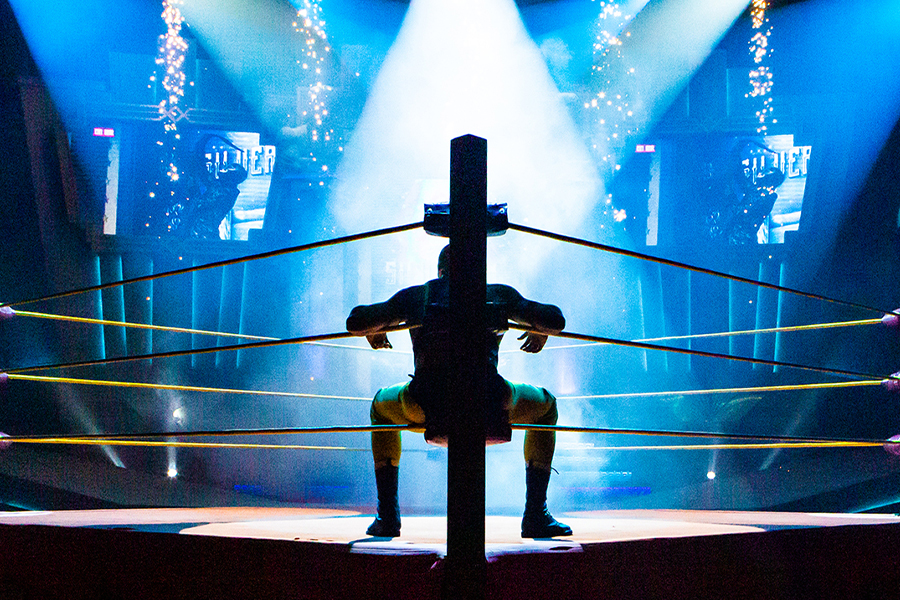
When an experience is being staged for an audience who understand the cultural tradition it operates in, it’s easier to play with the cultural elements that are already established. But what happens if you try to repeat the same experience, but for an audience of national and international guests and tourists who might not have any knowledge of these traditions?
For the Monarca del Ring Lucha Libre Experience, a live show created in collaboration with a Mexican wrestling company, Cocolab used several techniques to immerse these kinds of guests in the cultural traditions of the event. They simulated the environment of a town where the Lucha Libre was taking place, where visitors could have a drink and get to know the local culture. When they finally got into the ring, a floor manager character explained to them that the match was being broadcast on live TV, and while coordinating the crew educated the audience on what was expected of them.
And for a collaboration with Disney to promote a live screening of the movie Coco alongside a live orchestra, Cocolab pushed to create meaningful moments inspired by the Mexican tradition of Day of the Dead. They made people feel as if they were entering via a cemetery, surrounded by rich symbols, and also allowed people to upload a photo of someone they loved who had passed, which were later projected on a vast scale around the screen. Through tapping into these very specific cultural moments, they were able to access moments of collective effervescence and transformation. (For more on designing cultural experiences for audiences outside of the original culture, see our Campfire East And West Is Best.)
“We can’t beat reality, but we can learn and be inspired by it to create more vibrant, meaningful and representative experiences.”
Miguel Melgarejo
Working Outside Of Your Culture
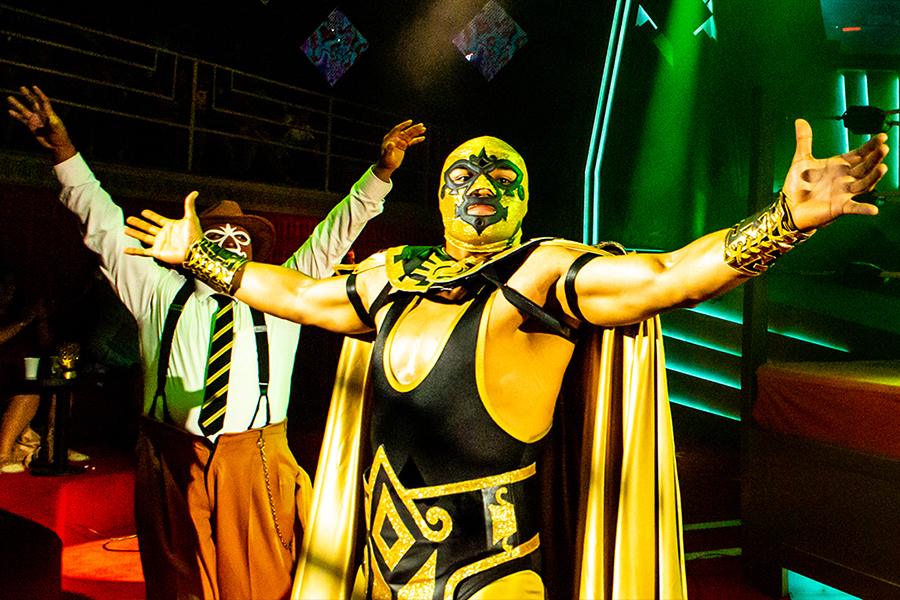
If working on an experience that hinges on cultural traditions outside of your own, it presents another challenge. How do you extract meaning from topics that aren’t embedded in your own roots? Can research ever be enough?
For Cocolab, while they developed a methodology for working with cultural experiences based on their own Mexican culture, they believe this can be extrapolated across all cultural experiences.
“It amounts to the same thing: going into the roots of that culture, finding what’s valuable, and figuring out what we can learn from experts from that place to make sure we’re saying the right thing.”
Alejandro Machorro
Those things with value are often universal, revolving around themes like hope, love, or death. It’s then about finding a modern format to bring new meaning to these themes.
Above all, it’s also about understanding that you are a guest of not only culture, but also nature in any given place, and that you must always be faithful to and respectful of the original cultures. Working with experts from these cultures can help to keep you on track.
Creative Generosity & Making People Fall In Love
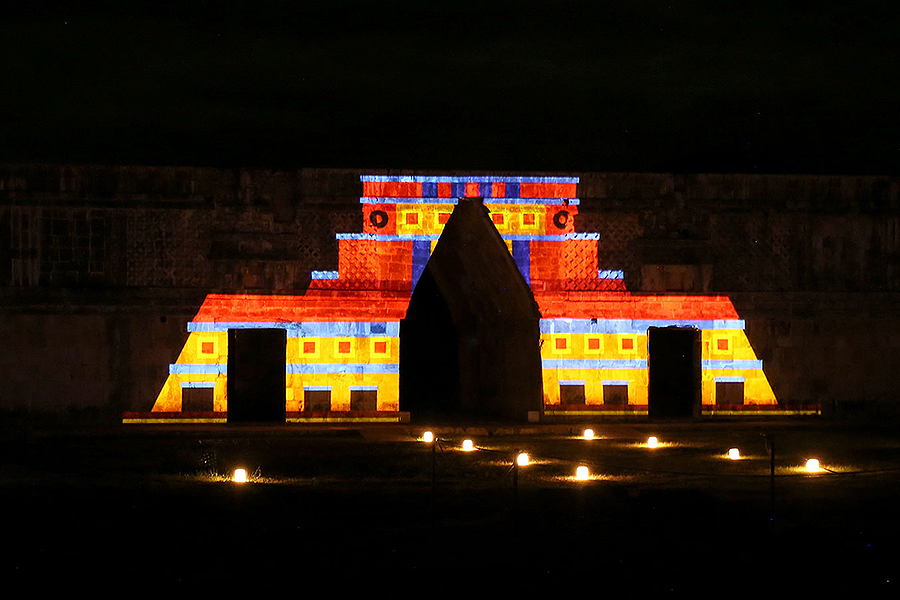
Realising these kinds of ambitious projects isn’t easy. It requires a great deal of convincing people, and if working on archaeological sites, abiding by strict guidelines. For Ecos de Uxmal, for example, Cocolab had to follow guidelines set by the National Institute of Anthropology which included zero intrusiveness for local flora and fauna, sustainability markers, the ability to be installed and uninstalled overnight in time for daytime visitors, an integral business model, and the need to be operated by local government. They also had to convince both local and national agents that this was a good idea!
This process can take years – but an integral idea that can speed up the process is that of “creative generosity”. Cocolab develop a lot of visualisations and miniature models to manifest their ideas and make people fall in love with them. It’s important to keep in mind that it’s not the responsibility of a government agency – or a real estate company, or a production company, or an investor – to be creative, but to do what they do really well. When you’re creatively generous and bring more to the table, more people can understand and get on board with what you do.
Another cherry to bring people along with your vision is that there are often unexpected positive outcomes from these kinds of big, creative projects. When carrying out multimedia experiences at archaeological sites, for example, Cocolab have seen tangential benefits occur such as an increase in hotel and restaurant demand and development, more job opportunities for locals, and stronger bonds within local communities.
Operations & Services Can Make Or Break You
When we approach a project from an experience design perspective, we’ll usually make sure that the design and execution of the experience are robust. However, operations and services can be the thing that make or break your experience. You need to train lots of people to both operate the experience and manage the essential services around it, such as ticket sales and merchandising.
For Cocolab’s next project, they will be taking charge of the operations and services as well as the design, upping their game in understanding marketing, logistics, visitor flow and so on. This will be achieved by building new teams, but maintaining the same method of creation and onboarding people to this way of doing things with the same level of detail as the design. It’s also crucial to partner locally – as designers we might know how to install, maintain and uninstall our experience, but local agents will be best placed to understand the market in that destination and how to manage the services and ticketing accordingly.
The Technology Must Serve The Meaning
It’s easy to get excited by the potential of new technologies and spend a lot of effort and money developing technology for massive interactions. However, unless we’re clear on exactly what we want it to do and why, we risk missing the mark altogether.
At an immersive exhibition for Disney, for example, Cocolab developed a lot of technological interactions including wristbands that lit up at certain points of the show. They thought this would be really engaging, but later realised that the impact was only felt on a massive scale. For the numbers of 500 people going through the exhibition, it didn’t work.
Similarly, at an immersive cultural exhibition called Teotihuacan, Cocolab had the challenge of making the show navigable for several different languages at once. They created an audio guide in several languages, which was great for explaining the show. The only problem was that the headphones meant that people couldn’t share their experience with anyone.
“We realised that we needed to always design something that people could share, and also reflect on to internalise the value.”
Alejandro Machorro
This points to another important lesson: always be prepared to change. For FRIDA Immersiva, the group’s first original IP show about the painter Frida Kahlo, they used an app synchronised to low frequency audio in each space that explained what was happening, but crucially didn’t use audio, so people could choose how they could engage with it.
“Prioritise interactions that bring relevance, coherence and meaning over technological solutions.”
Miguel Melgarejo
Inspiring The World Is A Collective Effort
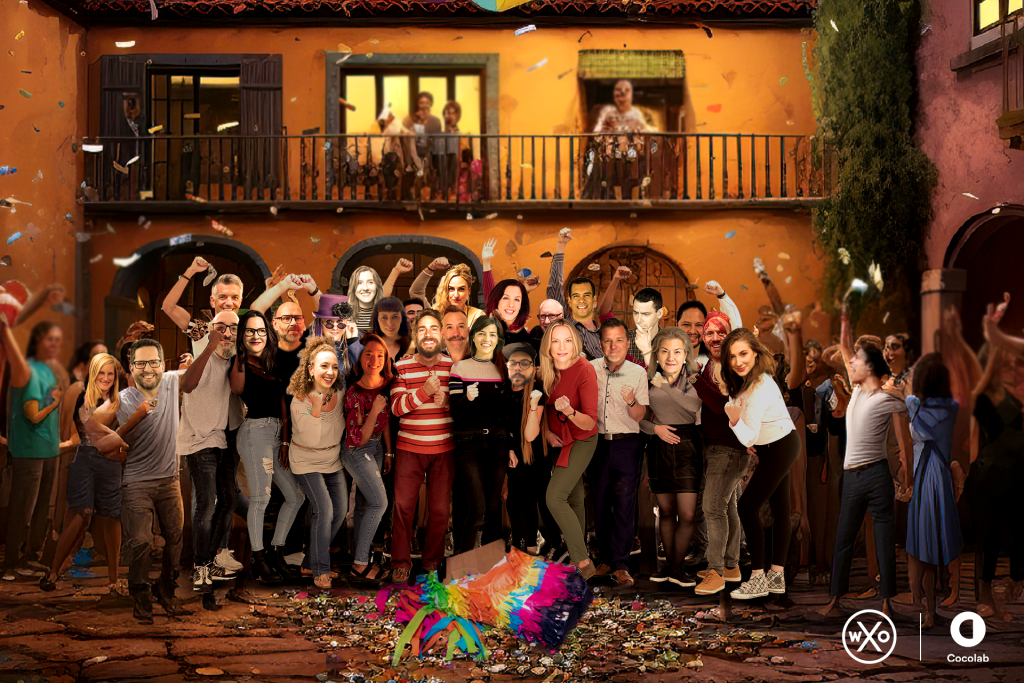
Cocolab defines its purpose as inspiring the world to positive transformation. But what is inspiration?
“We’ve learned so far that inspiration has to be about pushing yourself to live something differently. Experiences are the evocative object – the thing outside of your routine that you can be exposed to and feel something different that transcends the self.”
Miguel Melgarejo
Experiences are our connection to new possibilities. The next step, transformation, depends on people feeling motivated to act on the basis of their discoveries. Cocolab have done a lot of research into how we might measure this, and have settled on one sure thing: it’s impossible for one company to change the world alone.
“Meaningful entertainment is an industry effort – we can only go so far by ourselves. We need to keep inspiring and pushing each other to create experiences that make life worth living.”
Alejandro Machorro
The WXO Take-Out
Although Cocolab’s work is grounded in their own Mexican culture, it’s telling that the methodology they’ve developed has allowed them to create cultural experiences the world over.
The more specific the details of our experience, the more likely we are to get to the universal stuff that makes us human – and even when we experience someone else’s culture, at its heart it’s often about humans coming together (see our previous Campfire with Manvir Singh on The Universal Ingredients of Story for more on creating experiences and narratives around this theme).
So next time you’re designing an experience, ask yourself:
- How can you hack cultural elements to create a renewed sense of awe and meaning?
- How do you persuade people to fall in love with your experience?
- How do you enable a shared experience?
Want to come to live Campfires and join fellow expert experience creators from 39+ different countries as we lead the Experience Revolution forward? Find out how – and the current speaker line-up – here.

